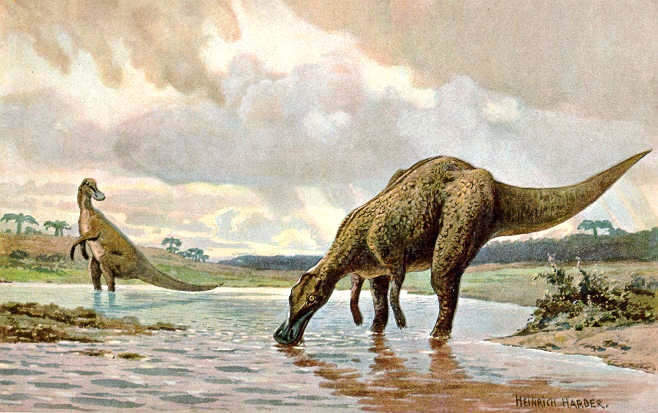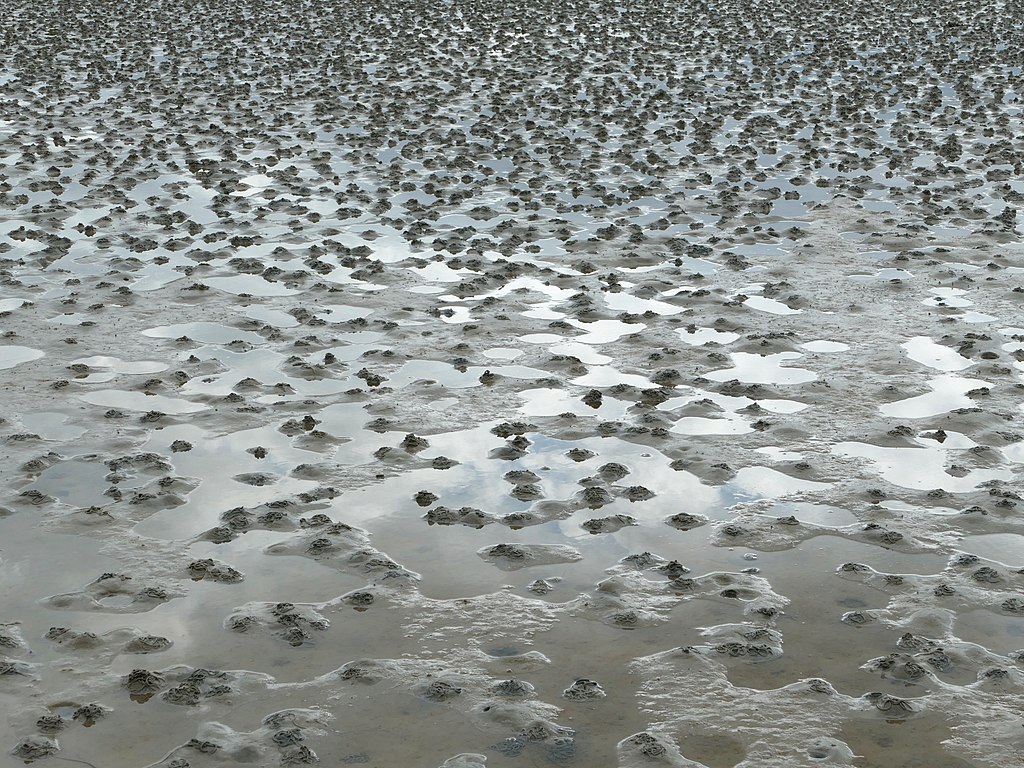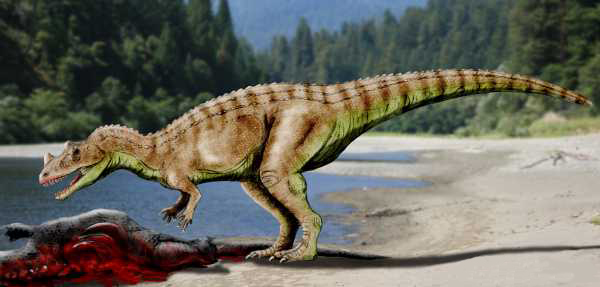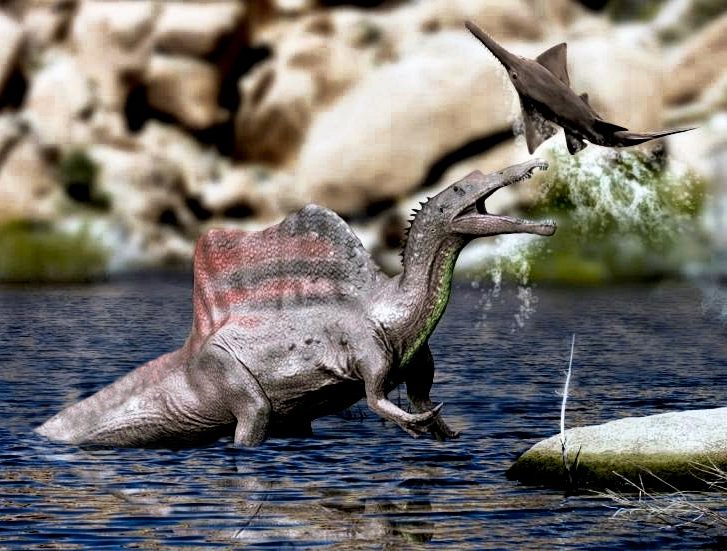The image of dinosaurs lounging in prehistoric waters, seeking relief from the heat of ancient Earth, has captivated our imagination for generations. But beyond artistic depictions and movie scenes, what does science tell us about dinosaurs’ relationship with water bodies? Did these magnificent creatures use rivers and lakes to cool off, similar to how modern elephants and hippos do? Exploring this question takes us on a fascinating journey through paleontology, comparative anatomy, behavioral ecology, and climate studies of the Mesozoic Era. While direct evidence can be challenging to obtain from fossils alone, scientists have developed compelling theories based on multiple lines of evidence that shed light on dinosaurs’ potential thermoregulatory behaviors.
Thermoregulation Challenges for Dinosaurs

Dinosaurs faced significant thermoregulation challenges throughout their 165-million-year reign on Earth. Many dinosaur species evolved to enormous sizes, creating potential heat retention problems, especially for larger sauropods and theropods. The Mesozoic climate fluctuated significantly but was generally warmer than today’s, with some periods experiencing greenhouse conditions and elevated carbon dioxide levels. Evidence suggests that even polar regions during the dinosaur era experienced relatively mild temperatures, though still with seasonal variations. Without the ability to sweat like mammals, dinosaurs would have needed alternative cooling strategies, potentially including behavioral methods like seeking shade or water immersion. Understanding how these animals managed their body temperature remains one of paleontology’s most intriguing questions, with water bodies potentially playing a crucial role in their thermoregulatory toolkit.
Evidence from Modern Analogues

Modern animals provide valuable clues to potential dinosaur behaviors through what scientists call the principle of comparative physiology. Large-bodied mammals like elephants and hippopotamuses regularly use water immersion as an effective cooling strategy, spending hours submerged to regulate their body temperature. Birds, the direct descendants of theropod dinosaurs, exhibit behaviors like soaking in water and spreading wings to cool down during hot weather. Even reptiles like alligators and crocodiles, despite being ectothermic, utilize water to prevent overheating and maintain optimal body temperatures. These contemporary examples strengthen the hypothesis that large-bodied dinosaurs might have employed similar strategies, especially since water immersion is one of nature’s most efficient cooling mechanisms. Scientists reason that if diverse modern animals convergently evolved these water-cooling behaviors, dinosaurs may have independently developed comparable strategies to deal with overheating.
Fossil Evidence of Water-Loving Dinosaurs

The fossil record provides tantalizing clues about dinosaurs’ relationships with aquatic environments. Multiple dinosaur trackways discovered along ancient shorelines and riverbanks suggest these areas were frequently traversed, though distinguishing between cooling behaviors and other activities like drinking or foraging remains challenging. Spinosaurus, with its crocodile-like snout and sail-like structure, has been interpreted as a semi-aquatic dinosaur based on its dense bones and other adaptations that would have facilitated swimming and fishing. Habitat reconstructions of numerous dinosaur fossil sites reveal proximity to ancient water bodies, with many species preferring riparian (riverside) environments. Some hadrosaur (duck-billed dinosaur) fossils have been discovered in positions suggesting they died while in or near water, though taphonomic processes (how organisms decay and become fossilized) complicate definitive conclusions. These fossil clues, while not conclusive proof of thermoregulatory water use, indicate that many dinosaur species maintained close relationships with aquatic environments throughout their lives.
Dinosaur Body Structure and Heat Management

The unique anatomy of dinosaurs provides insights into their potential thermoregulation strategies, including possible water use. Large sauropods faced particular thermal challenges due to their massive body volume, which potentially stored significant heat that needed dissipation. Dinosaur skin impressions indicate most species lacked dense fur or feathers on their main body (except some theropods), potentially facilitating heat exchange with water or air. Many dinosaur species possessed extensive surface features like plates, sails, and frills that researchers hypothesize may have served dual purposes of display and temperature regulation. The long necks of sauropods would have allowed them to keep most of their body submerged while breathing comfortably, similar to modern hippos. Blood vessel patterns in some dinosaur bones suggest sophisticated mechanisms for heat exchange that might have complemented behavioral cooling strategies. These anatomical features collectively suggest that many dinosaurs were well-equipped to utilize water bodies for cooling if necessary.
The Case for Semi-Aquatic Dinosaurs

While most dinosaurs were primarily terrestrial, mounting evidence suggests certain species were semi-aquatic, spending significant portions of their lives in water. Spinosaurus demonstrates several aquatic adaptations, including dense bones for buoyancy control and a crocodile-like snout suitable for catching fish, suggesting it was likely semi-aquatic. Baryonyx and other spinosaurids show similar adaptations, with fish scales and bones found as stomach contents in some fossils, indicating frequent interaction with aquatic environments. Some hadrosaurs possessed webbed hands that could have facilitated swimming, though debate continues about whether this was for cooling, escape from predators, or foraging. Biomechanical studies of certain dinosaur tails suggest they could have been efficient swimming appendages, particularly in spinosaurids and some ornithopods. Though different from cooling behavior specifically, evidence for semi-aquatic lifestyles strengthens the case that water immersion was a familiar behavior for several dinosaur lineages, making cooling via water a plausible secondary benefit.
Geological Evidence of Mesozoic Water Bodies

The Mesozoic landscape offered abundant water resources that dinosaurs could have utilized for cooling. Geological studies reveal extensive river systems, lakes, and coastal environments throughout the Mesozoic Era when dinosaurs flourished. Sedimentary records indicate cyclic periods of wet and dry seasons in many dinosaur habitats, potentially making water bodies crucial resources during hotter periods. Paleoclimatic reconstructions suggest many dinosaur-rich environments experienced monsoon-like seasons with temporary abundance of water, followed by drier periods. Fossil lake beds and ancient river channels frequently yield dinosaur remains, suggesting these areas were important to dinosaur ecology. The prevalence of riparian (riverside) plant fossils in association with dinosaur remains further indicates the importance of water-adjacent habitats for many species. These geological findings demonstrate that most dinosaurs would have had regular access to water bodies suitable for cooling behaviors throughout the Mesozoic.
Dinosaur Metabolism and Temperature Regulation

The debate about dinosaur metabolism provides context for understanding their potential need for water-based cooling. Recent research increasingly supports that many dinosaurs were mesotherms or homeotherms with metabolic rates between modern reptiles and mammals, creating unique thermoregulatory needs. Isotope studies of dinosaur teeth and bones have helped scientists estimate body temperatures, suggesting many species maintained relatively stable internal temperatures. Growth rate analyses of dinosaur bones indicate many species grew rapidly, suggesting elevated metabolisms that would generate significant internal heat. Large dinosaurs likely exhibited gigantothermy, where sheer body mass helps maintain stable temperatures but also creates challenges for cooling down when necessary. Smaller, more active dinosaurs, particularly theropods, might have had higher metabolic rates requiring more active cooling strategies during intense activity or hot weather. This metabolic profile suggests that, unlike modern reptiles that primarily warm themselves, many dinosaurs would have needed effective strategies for shedding excess heat, making water immersion a logical behavior.
Water as Protection from Predators

Beyond thermoregulation, water bodies might have served multiple purposes for dinosaurs, including protection from predators. Large water bodies could have provided refuge for smaller or more vulnerable dinosaur species, similar to how modern zebras and wildebeests use rivers and lakes to escape land predators. Certain predatory dinosaurs may have been less adapted for swimming or water pursuit, making aquatic environments relatively safer zones for potential prey species. The buoyancy provided by water would have reduced the weight burden for massive sauropods, potentially offering relief for joints and muscles while simultaneously providing cooling effects. Some herbivorous dinosaurs with adaptations for aquatic mobility might have used deep water as overnight resting areas, similar to behavior observed in modern hippopotamuses. These secondary benefits would have reinforced water-seeking behaviors, making cooling an advantageous side effect even if not the primary motivation for entering water bodies.
Regional Variations in Water-Cooling Behavior

Dinosaur cooling behaviors likely varied significantly based on their geographic location and the prevailing climate. Dinosaurs in tropical and subtropical regions probably relied more heavily on water cooling due to consistently higher ambient temperatures and solar radiation. Polar dinosaurs, which paleontological evidence confirms existed in significant numbers, might have used water bodies differently, perhaps primarily during brief summer warm periods. Coastal dinosaur populations had access to marine environments, though evidence for dinosaurs entering saltwater remains limited compared to freshwater indicators. Desert-adapted dinosaurs likely evolved specialized cooling mechanisms less dependent on regular water access, though they would have utilized oases and seasonal water bodies when available. These regional variations highlight the remarkable adaptability of dinosaurs across different environments and climate regimes throughout the Mesozoic Era. The flexibility in thermoregulatory strategies, including opportunistic use of water bodies, may have contributed to dinosaurs’ evolutionary success across diverse habitats worldwide.
Dinosaur Trackways Near Water Sources

Fossilized dinosaur footprints provide some of the most compelling evidence for dinosaur interaction with water bodies. Numerous trackway sites worldwide show dinosaur footprints along ancient shorelines, riverbanks, and even within shallow water sediments. Some trackways show multiple individual dinosaurs moving parallel to shorelines, suggesting these areas served as common travel corridors. Deeper impressions in some tracks indicate dinosaurs occasionally walked through mud or shallow water rather than avoiding these substrates. Certain trackway sites show evidence of both herbivorous and carnivorous dinosaurs frequenting the same water-adjacent areas, suggesting these were important resource zones. In some locations, trackways indicate dinosaurs entered and exited water bodies, though determining the purpose—whether for crossing, feeding, or cooling—remains speculative. The global distribution of water-associated dinosaur trackways across different taxonomic groups suggests that proximity to water bodies was a common feature of dinosaur behavior regardless of species, supporting the hypothesis that water played multiple important roles in dinosaur ecology, potentially including thermoregulation.
Age and Size Factors in Water Cooling

The relationship between dinosaurs and water bodies likely varied throughout their life cycles and across different size classes. Juvenile dinosaurs, with their higher surface-area-to-volume ratios, could regulate temperature more easily than adults but might have been more vulnerable to predation in open water. The largest sauropods, some weighing over 70 tons, would have faced the most significant heat retention challenges, potentially making water immersion especially beneficial for these giants. Medium-sized dinosaurs like hadrosaurs and ceratopsians might have used water opportunistically, especially during seasonal temperature peaks or after physical exertion. The smallest dinosaurs, particularly feathered species, might have relied less on water immersion and more on shade-seeking or other behavioral cooling mechanisms. Pregnant females or dinosaurs with eggs might have had different thermoregulatory needs, potentially influencing their water-related behaviors. These age and size-related variations suggest dinosaurs likely employed diverse strategies for temperature regulation throughout their lives, with water bodies serving different purposes depending on individual circumstances.
Scientific Challenges in Determining Ancient Behaviors

Researchers face significant challenges when attempting to determine specific behaviors like water cooling in extinct animals. The fossil record primarily preserves physical structures rather than behaviors, creating inherent limitations in behavioral paleontology. Scientists must rely on multiple lines of indirect evidence, including anatomical features, ecological context, and comparative biology, to reconstruct potential behaviors. Computer modeling of dinosaur thermophysiology offers promising insights but requires assumptions about metabolism, environment, and soft tissue properties that cannot be directly observed. The process of fossilization introduces sampling biases, as preservation tends to favor certain environments and conditions over others, potentially skewing our understanding of habitat preferences. Researchers must carefully distinguish between behaviors that are merely possible versus those that are probable based on available evidence. Despite these challenges, the multidisciplinary approach of modern paleontology continues to refine our understanding of dinosaur behaviors, including their potential use of water bodies for cooling purposes.
The Future of Research on Dinosaur Cooling Behaviors

Emerging technologies and methods promise to shed new light on dinosaur thermoregulation and water-related behaviors. Advanced CT scanning of fossil bones reveals internal structures and blood vessel patterns that offer insights into heat regulation capabilities not visible through traditional examination. Isotope analysis of tooth enamel can now provide seasonal temperature variations experienced by individual dinosaurs, potentially indicating if they used behavioral mechanisms to maintain stable body temperatures. Sophisticated computer modeling incorporating the latest understanding of dinosaur physiology allows researchers to simulate heat gain and loss under various behavioral scenarios. New fossil discoveries, particularly those preserving soft tissues or showing exceptional preservation of environmental context, continue to refine our understanding of dinosaur biology and behavior. Collaborative research between paleontologists, physiologists, ecologists, and climate scientists creates more comprehensive reconstructions of dinosaur lives than ever before. While definitive proof of water cooling behaviors may remain elusive, future research will continue to narrow the range of possibilities and provide increasingly detailed pictures of how dinosaurs managed their thermal environments.
Conclusion: The Plausibility of Aquatic Cooling in Dinosaurs

While direct evidence of dinosaurs using water bodies specifically for cooling remains circumstantial, multiple lines of evidence suggest this behavior was not only possible but probable for many dinosaur species. The combination of their body size, metabolic needs, the warmer Mesozoic climate, and abundant water resources would have made aquatic cooling a logical and effective strategy. Fossil evidence consistently places many dinosaur species in water bodies, with anatomical features in some groups suggesting comfort in aquatic environments. The widespread use of water for cooling among modern animals, including the closest living relatives of dinosaurs, strengthens the case for similar behaviors in these ancient creatures. Though we may never have definitive proof of a Brachiosaurus lounging in a lake to beat the Jurassic heat, the scientific consensus increasingly supports that water bodies likely played important roles in dinosaur thermoregulation strategies. This understanding adds another dimension to our appreciation of these remarkable animals and how they successfully dominated Earth’s terrestrial ecosystems for over 150 million years.




